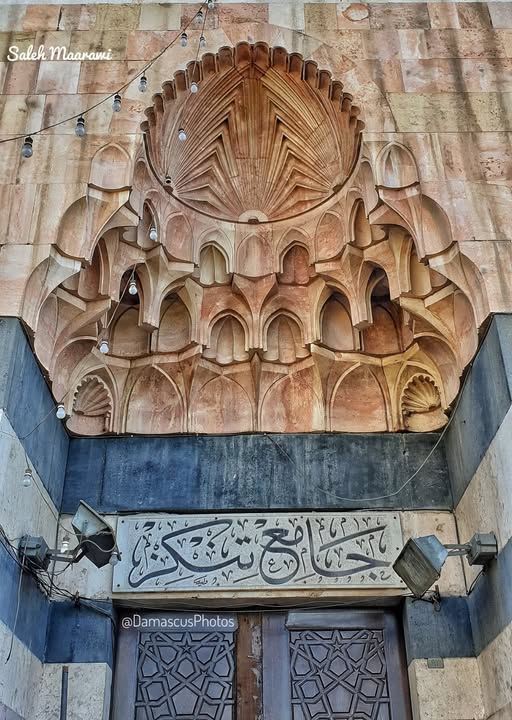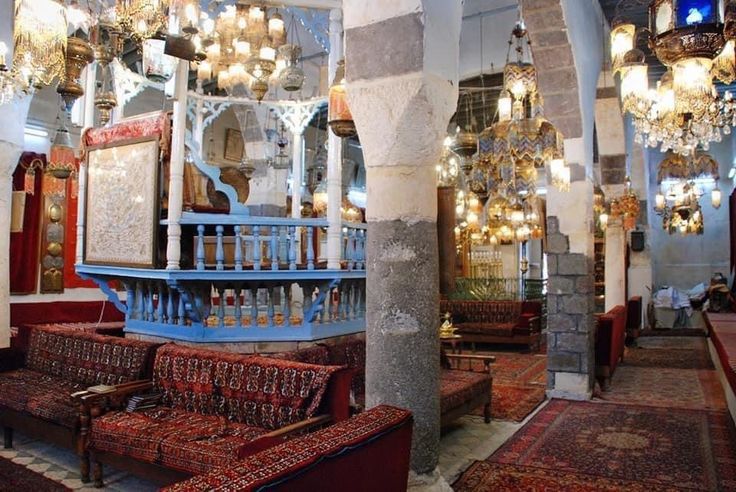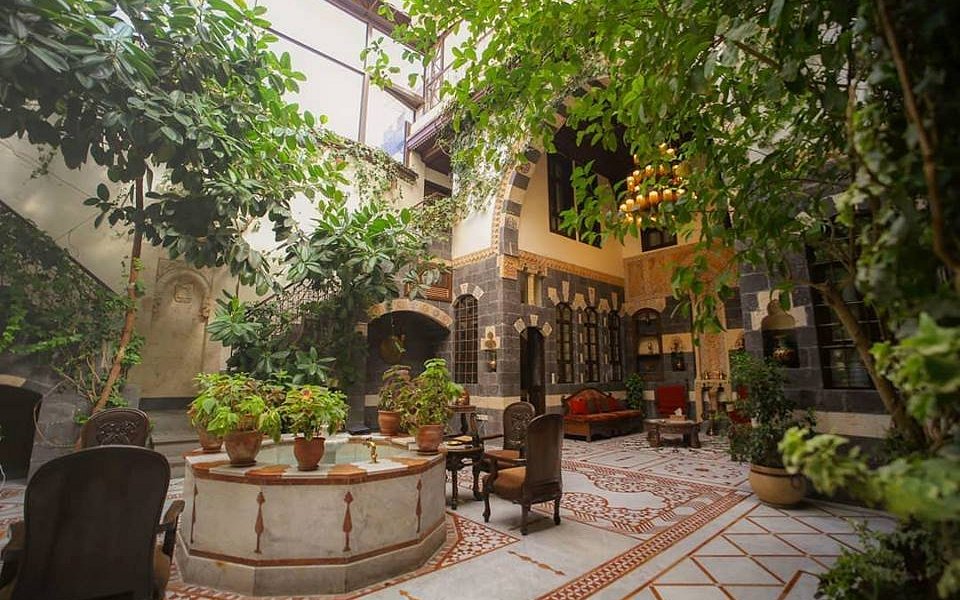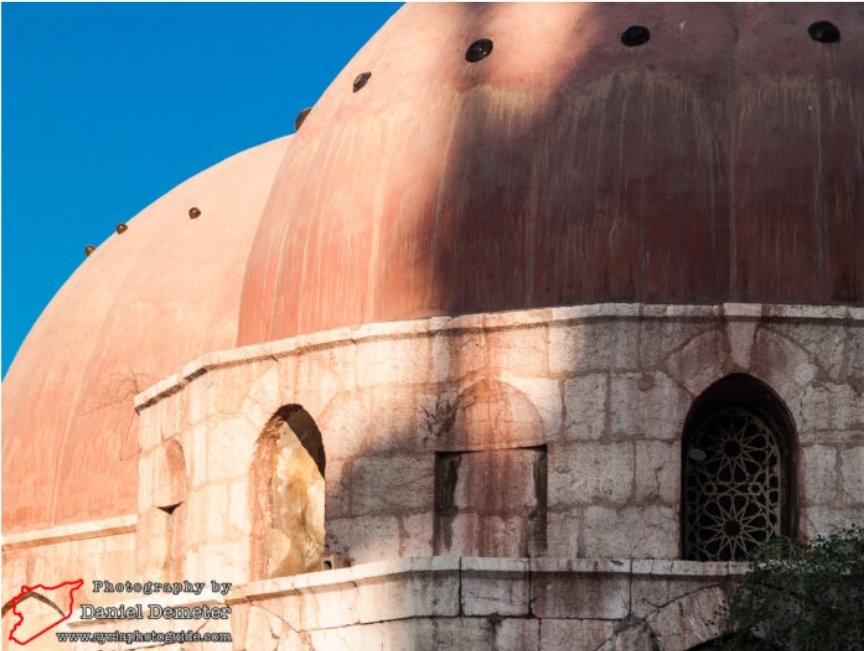Tankīz Mosque is situated on the western bank of the Barada River, facing al-Marjah Square. This Mamluk architectural gem was commissioned in 1317 CE (717 AH) by Sayf al-Din Tankīz, the viceroy of the sultanate, to serve a bustling commercial district located just outside the old walls of Damascus.
The western entrance is distinguished by its pyramidal muqarnas and vibrant colored marble panels, leading into a rectangular courtyard centered around a fountain and ablution basin. The mosque’s octagonal minaret rises from a short base and transitions from a square to an octagon via protruding stone balconies—a style reflecting the migration of architectural solutions from Cairo to the Levant.
The mosque, known as al-Darwishiyya, underwent severe transformations، between 1831 and 1925, it was converted into a military barracks during Ibrahim Pasha’s campaign and later under the French occupation. Part of the roof was destroyed in a fire, and traces of this damage are still visible in the northern wing. Partial restoration efforts enabled the reopening of the prayer hall in 1937, and today, a community-led project supported by the Directorate of Antiquities is working to restore the stone façade and revive the muqarnas decorations.
One notable feature is Tankīz’s tomb, marked by a rare Kufic-inscribed marble headstone, housed in a separate chamber. The mosque is also known for its two wooden waterwheels (na‘uratayn), which once lifted water to a now-lost endowment garden.








